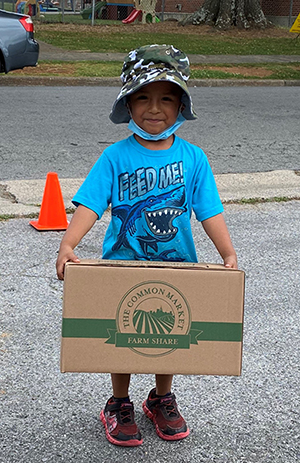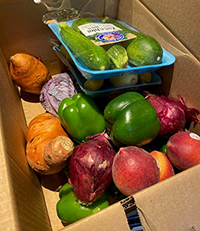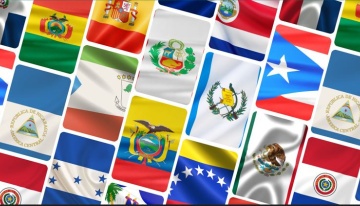There’s No Vaccine for Hunger
YMCAs nationwide are partnering with businesses and community organizations to feed at-risk Americans
In-person learning. Hugs from loved ones. Attending concerts, festivals, and other events. The distribution and administration of COVID-19 vaccines has helped millions of Americans return to some aspects of their pre-pandemic lifestyles. However, there is one pandemic-related hardship that isn’t going away any time soon: hunger.
Addressing a Growing Need

In February 2020, the YMCA of Rome & Floyd County in Georgia provided 2,000 meals to local residents. Following local shutdowns in March, the demand increased drastically. Y staff and volunteers needed to provide 20,000 meals a month to meet the community’s need.
Unfortunately, what occurred in Rome last year is an all-too-common story. The U.S. is no stranger to hunger, but the onset of the pandemic led to a sharp increase in food insecurity, putting unprecedented pressure on nonprofit organizations like the Y that provide meals and groceries for those in need.
For example, the YMCA of Memphis and the Mid-South went from providing 700 daily meals for children to 23,000 daily meals to families and children. In the first six months of the pandemic, Ys across the country served more than 37 million meals and snacks. In total, between March 2020 and February 2021, the Y experienced a 155% year-over-year increase in the distribution of meals and snacks.
Children who went hungry at least once in their lives were 2.5 times more likely to have poor overall health 10 to 15 years later compared with those who never had to go without food.
A Slow Rebound
A Slow Rebound
While the broad rollout of COVID-19 vaccines and a slowly improving job market may spur feelings of a return to normalcy, unfortunately, hunger rates are expected to remain high in the months and likely years to come. For context, hunger hasn’t been this high since the Great Recession in 2008, and it took eight years to recover from that.
Food insecurity rates in the U.S. reveal disparities along racial lines, with recent studies showing that Black non-Hispanic households are nearly two times more likely to be food insecure at a rate of 22.5% as compared to the national average of 12.3%. Similarly, Hispanic/Latino households face an 18.3% food insecurity rate. The effects of hunger exacerbate economic and health inequities throughout one’s lifetime. Children who went hungry at least once in their lives were 2.5 times more likely to have poor overall health 10 to 15 years later compared with those who never had to go without food. According to data from Feeding America, 50% of children facing hunger will need to repeat a grade.
The Y's Role

While many associate the Y with summer camps, fitness centers, and swimming lessons, the Y’s hunger relief programs play a pivotal role year-round, including the critical summer months when children are most at risk. Given its footprint and infrastructure, serving nearly 10,000 communities across the nation, the Y is uniquely qualified to offer support to many facing hunger, particularly those who are turning to meal sites for the first time.
While hunger rates have been decreasing in recent months, there are still much higher levels of need in comparison to pre-pandemic numbers—numbers that aren’t expected to drop to pre-pandemic rates for several years. Our efforts to help those in need would not — and could not — be possible without the help and support of donors and partners on both a local and national level. Strategic partnerships and support from corporations, restaurants, local businesses, churches, farms, housing authorities and local governments were fundamental in helping the Y meet the increased need across the country.
Thanks to these critical relationships, the Y has established more than 11,000 food distribution sites, ensuring that children, families and seniors are able to access healthy meals. Today, the Y continues to provide 3.5 million healthy meals to families and children, plus four million pounds of groceries, each month.
This Hunger Action Month, help us ensure all families have the healthy, nutritious food they need to thrive. Learn more about the Y’s hunger relief efforts and how you can support this essential work.
A modified version of this blog originally appeared in Fast Company on July 19, 2021.





